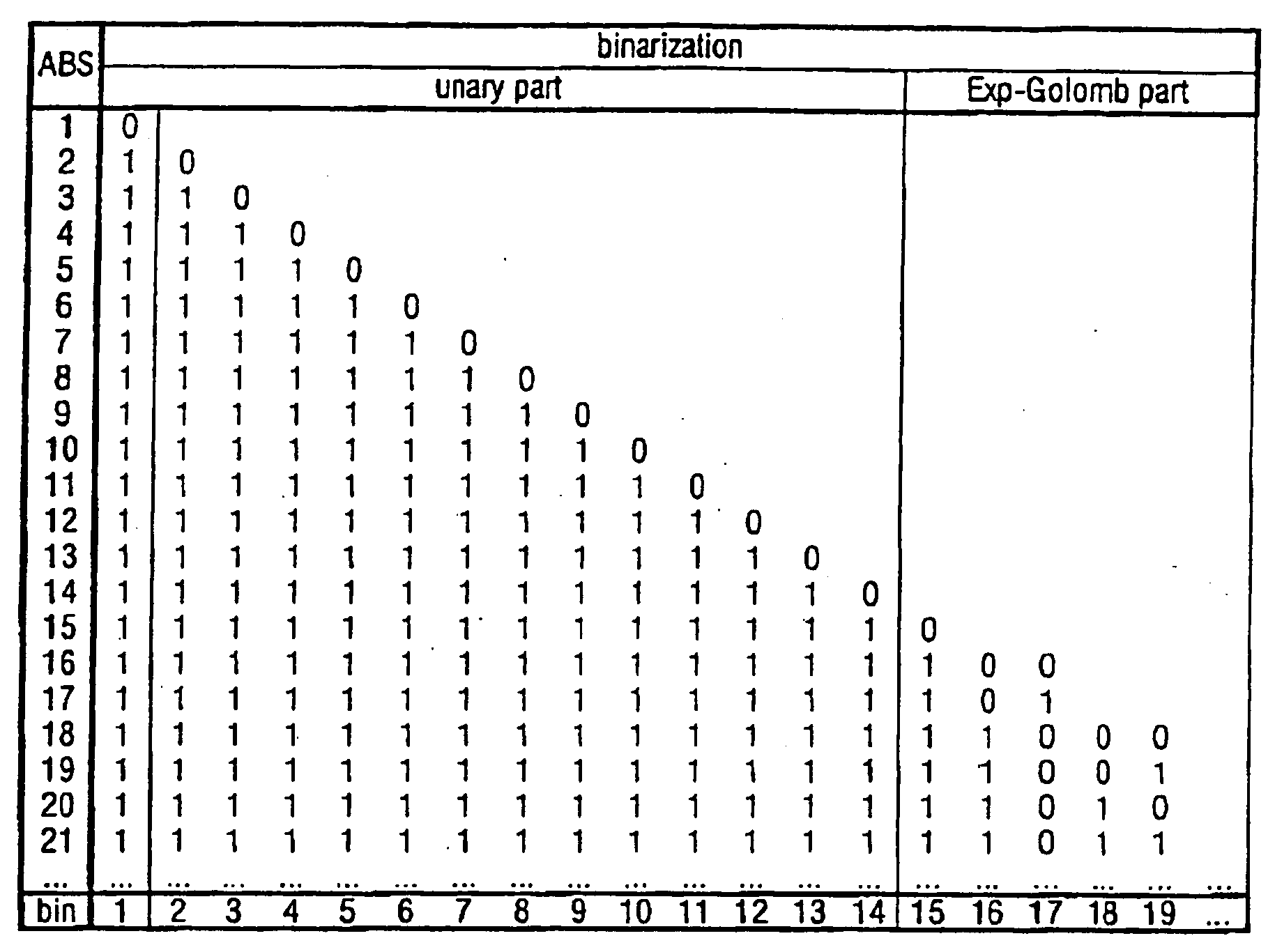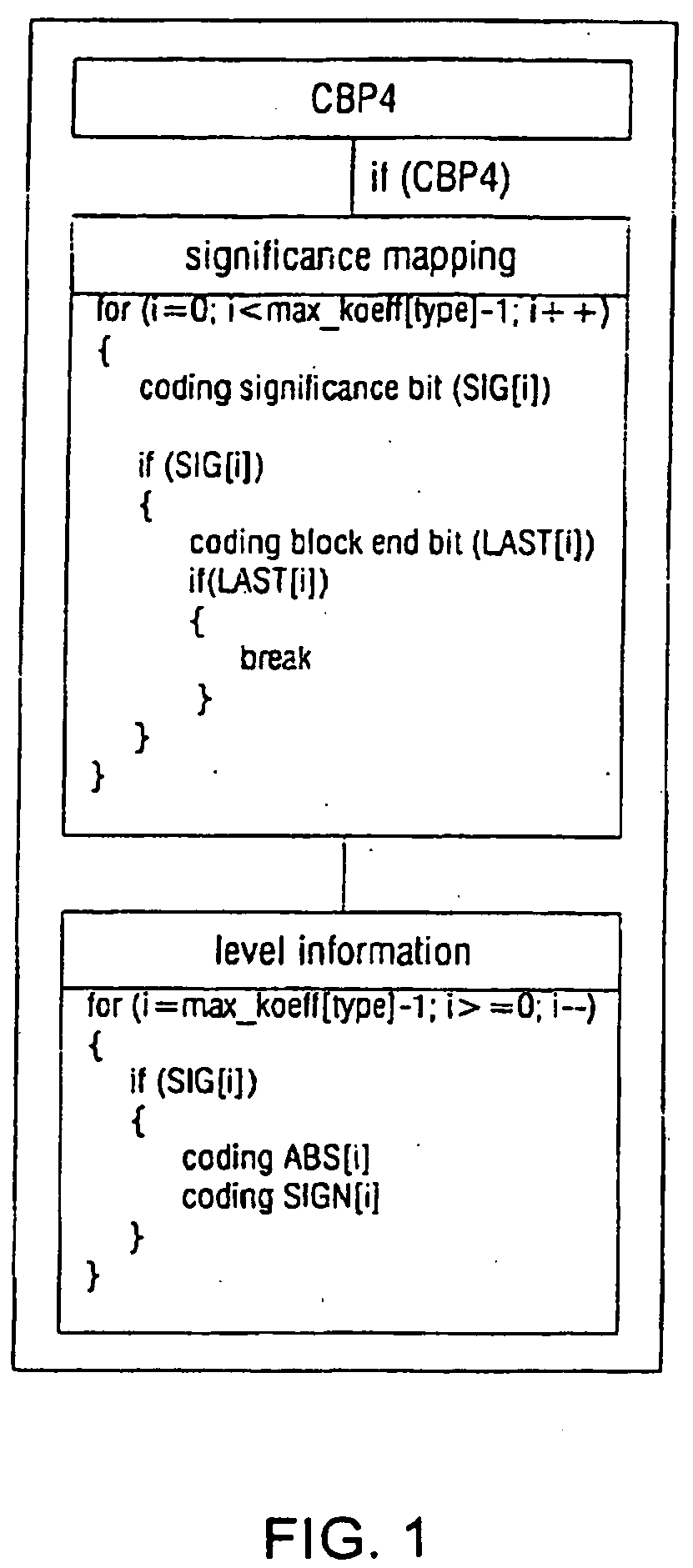Method and Arrangement for Coding Transform Coefficients in Picture and/or Video Coders and Decoders and a Corresponding Computer Program and a Corresponding Computer-Readable Storage Medium
a technology of coding transform coefficients and computer programs, applied in image data processing, color television, television systems, etc., can solve problems such as inability to adapt code word tables, and inability to adjust to actual symbol statistics, so as to eliminate deficiencies and keep the amount of coding required small
- Summary
- Abstract
- Description
- Claims
- Application Information
AI Technical Summary
Benefits of technology
Problems solved by technology
Method used
Image
Examples
Embodiment Construction
[0062]FIG. 1 illustrates the novel coding method. For each block of transform coefficients, a one-bit symbol CBP4 is transferred at first, unless higher order syntax elements (CBP or macro block mode) already indicate that the block considered does not contain any significant transform coefficients. The CBP4 symbol will be zero if there are no significant coefficients in the block. If it is one, a significance mapping specifying the position (in scan order) of the significant transform coefficients will be coded. Subsequently, the magnitude and the signs of the significant coefficients are transferred in a reverse scan order. A detailed description of the coding process will be given below in 1. Afterwards, context modeling for the binary arithmetic coding will be described in 2.
[0063]1. Description of the Coding of the Transform Coefficients
[0064]1.1 Scanning Transform Coefficients
[0065]The transform coefficients of each block are mapped to a vector by means of a scan process (such...
PUM
 Login to View More
Login to View More Abstract
Description
Claims
Application Information
 Login to View More
Login to View More - R&D
- Intellectual Property
- Life Sciences
- Materials
- Tech Scout
- Unparalleled Data Quality
- Higher Quality Content
- 60% Fewer Hallucinations
Browse by: Latest US Patents, China's latest patents, Technical Efficacy Thesaurus, Application Domain, Technology Topic, Popular Technical Reports.
© 2025 PatSnap. All rights reserved.Legal|Privacy policy|Modern Slavery Act Transparency Statement|Sitemap|About US| Contact US: help@patsnap.com



